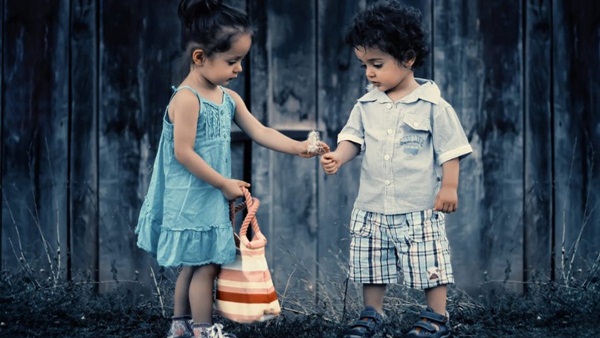Love for others must be tempered with self-love.
MONICA FERNANDES
God loves a cheerful giver.’ –The Bible. The opposite is also true. Those who give of their time, money, energy and expertise derive happiness from giving. A few years ago a Gallup poll was conducted across 136 countries and with 200,000 respondents to correlate happiness with donating. It was found that as many as 90% respondents found happiness in donating.
Another study found that donating to charity had the same effect in terms of happiness as doubling of household income. For instance if you earned Rs. 25,000 and donated part of charity, you would be has happy as someone who earned Rs. 50,000 and did not donate. Even giving anonymously makes us happy. Prof Raj Raguna- than talks of two year old kids who were given goldfish crackers. A toy monkey was placed
near the children. Most of them tried to give one cracker to the monkey. He concluded that human beings are hardwired to kindness.
‘It takes giving to be happy.’—The Dalai Lama. Why does giving make us happy? One reason is that we want to make a difference. Another is because of reciprocity. The recipients love us better and are likely to return our thoughtful gesture with gratitude, kindness, trust and love. Givers harness a lot of good will, sometimes even unintentionally. This in turn increases their happiness and that of others. Their focus changes from ‘me’ to ‘we’. The ripple effect of good deeds enhances our joy.
Wharton Prof Adam Grant, who specialises in organisational psychology, cautions against indiscriminate giving. In his words we should be smart or ‘Otherish Givers’, not selfless givers. A selfless giver lacks self preservation as giving without a thought of looking after his health, his relationships with family and friends, his hobbies, his paying job to make ends meet is inviting burn out. He becomes inefficient and gets frustrated. His relationships also deteriorate. He seems to lack the giving filter. Love for others must be tempered with self-love.
Let us take two surgeons A and B. Both sincerely want to heal people and have altruistic motives in doing good work among the under- privileged. Dr A works himself to the bone. He does all the free consultations, operations and fund raising himself. Dr B trains his juniors and lets them perform operations under his watchful eye. He is efficient and delegates fund raising. He finds time to spend on himself and family. Obviously Dr B is the otherish giver.
Another issue that the selfless giver faces
is that she feels manipulated by others and this results in frustration. My school classmate Meena was a couple of years older than me. She felt that I was a kid and so volunteered to do
all my needlework assignment for me, besides her own. I readily agreed as it meant I would have fun spending time with my friends while Meena slogged. She did my needlework but was understandably irritated at the end of it.
Prof Ragunathan suggests that we employ ‘value enhancing strategies’ to increase the chances of seeing the impact of our generosity. If we donate for the education of an underprivileged child and ask the orphanage to keep us abreast of the progress the child is making in his education, we feel motivated to help another child. Romila Palliative Care, Bandra, Mum
bai reaches out to the elderly once a week in a program called the Silvers Circle. Volunteers teach chair exercises to the participants to keep time with a catchy tune. Quizzes and games are organised. Everyone has a blast including the volunteers who are able to see the impact of the work they are putting in. It’s a win-win situation.
‘To get the full value of joy you must have someone to divide it with.’—Mark Twain. The good news is that more people are givers than what Prof. Adam Grant calls ‘takers’. Takers
are basically selfish people who do not share their talents, knowledge and resources. The
joy of giving is evidenced by sociologist Wayne Baker and his wife Cheryl when they developed the ‘Reciprocity Ring’. The purpose is to share among a group of members. It has been used
by individuals and also businesses. Let’s say one person wants to grow his business. He gets valuable inputs from another member. Another member requires information on good colleges for her children. This guidance is provided by a college professor in the group.
I conclude with the wise words of Charles Dickens: ‘No one is useless in this world who lightens the burden of others.’
∎